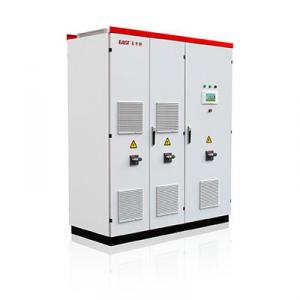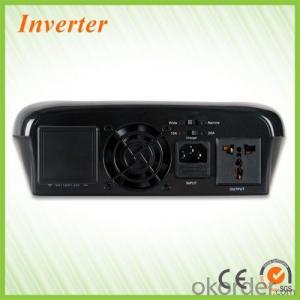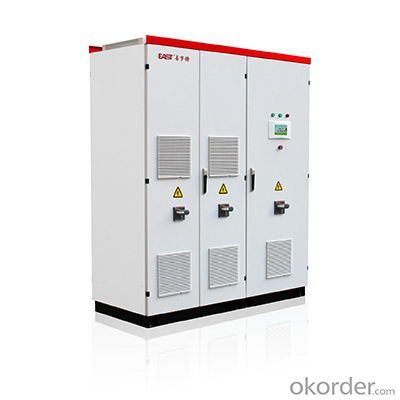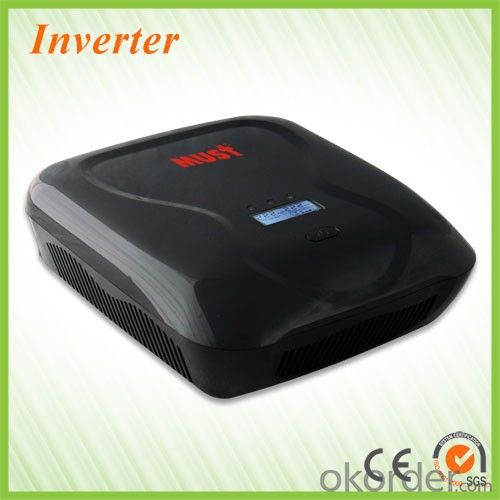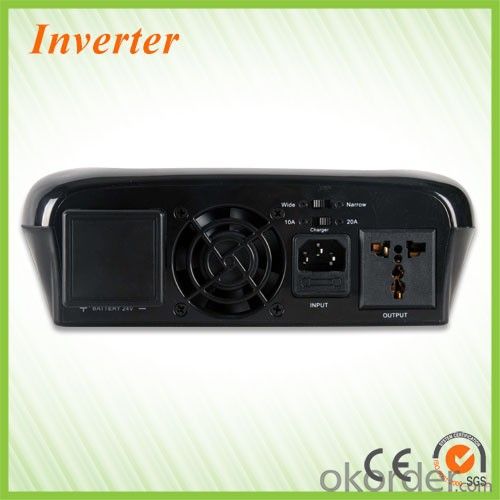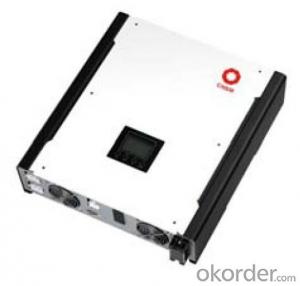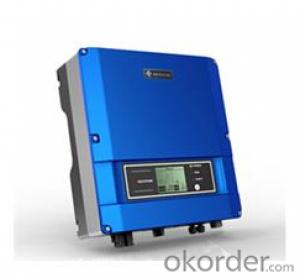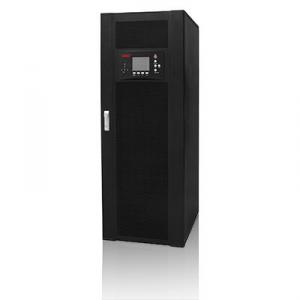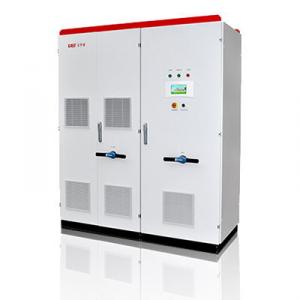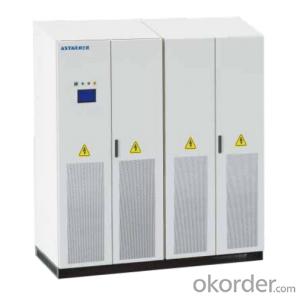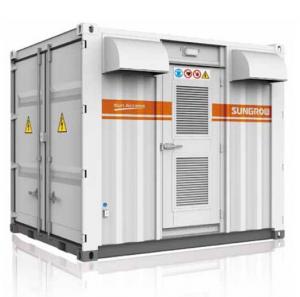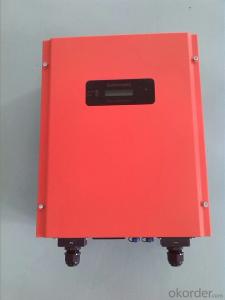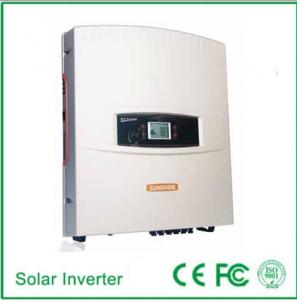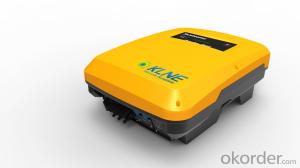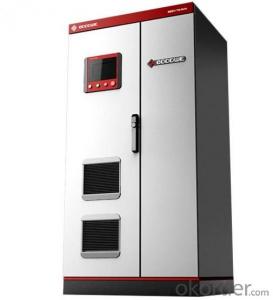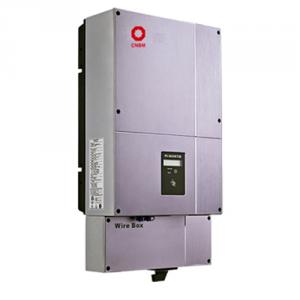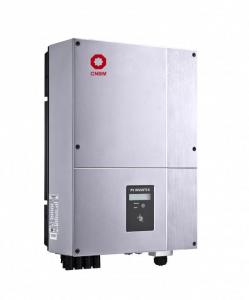Amazon Solar Inverter EA500KTL/H - Wider Input Voltage Range and Higher Efficiency On-Grid PV Central Inverter
- Loading Port:
- China main port
- Payment Terms:
- TT or LC
- Min Order Qty:
- 1 pc
- Supply Capability:
- 1000 pc/month
OKorder Service Pledge
OKorder Financial Service
You Might Also Like
EA500KTL/H
EA500KTF is designed with external isolation transformer. It has wider input voltage range and higher efficiency. Moreover, optical fiber isolation technology has been adopted to increase its anti-interference ability. Complete protection, higher MPPT efficiency, simple monitoring and capability of parallel operation make it ideal for large scale PV power plant.
● Maximum efficiency up to 98.7% (without transformer)
● Effective IGBT module
● Wide MPPT range, convenient for module configuration
● With DSP + CPLD digital control technology, having complete protection, safe and reliable
● Advanced MPPT (Maximum Power Point Tracking) algorithms
● Advanced Anti-islanding technology
● Efficient thermal system design, suitable for critical PV applications
● Multilingual LCD, easy to operate
● Integrated multi-communication interfaces, easy to monitor
● Low voltage ride through function
● For large centralized power plant connecting to high-voltage grid (with external step-up transformer)
● Active and reactive power regulation function (optional)
● TÜV CE, CQC certification
Specification / Type | EA500KTL | EA500KTH |
Input (DC) | ||
Max DC Voltage | 1000Vdc | |
Full-load MPPT Voltage Range | 450~820Vdc | |
Max DC Power | 550KWp | |
Max DC Current | 1200A | 1100A |
Number of DC Inputs | 16 | 16 |
Output (AC) | ||
Nominal AC Power | 500KW | |
Nominal AC Voltage | 270Vac | 350Vac |
AC Voltage Range | 210~310Vac | 245~362Vac |
Nominal Frequency | 50Hz/60Hz | |
Frequency Tolerance Range | 47-51.5Hz/57-61.5Hz | |
Distortion (THD%) | <3%(at nominal power) | |
Power Factor (Cos phi) | 0.9(leading)~0.9(lagging) | |
System Parameters | ||
Max Efficiency | 98.7% | |
Euro Efficiency | 98.5% | |
Protection Degree | IP20 (indoor) | |
Night Consumption | <100W | |
Operation Temperature Range | -25℃~+55℃ | |
Cooling | forced-air cooling | |
Relative Humidity | 0-95%, no condensation | |
Max Working Altitude | 2000m (derating above 3000m) | |
Display and Communication | ||
Display | LCD | |
Standard Communication | RS485 | |
Optional Communication | Ethernet /USB | |
Structure Parameters | ||
Dimensions(W×D×H) | 1800×800×2200mm | 1800×800×2200mm |
Weight | 1500kg | 1500kg |
· Q. What is an UPS and What it is for ?
An uninterruptible power supply (UPS) is a device that allows your computer or telephone switch or critical equipement to keep running for at least a short time or longer time when the primary power source is lost. It also provides protection from power surges, spikes, brownouts, interference and other unwanted problems on the supported equipment.
· Q. How long the UPS to run when power goes?
This can take 3 paths.
1.You can pick a UPS that is rated for pretty much the full VA you need so it will be running at 100% of capability and will thus last 'n' minutes.
2.You can pick a UPS that is rated at a much higher VA value than you really need so, for example, is running at 50% of capability and will thus last for longer than the UPS from option 1.
3.You can use extra external battery packs to run for longer. If charging capability allows, the more and the bigger batteries you take with, the longer time UPS runs.
or using a generator after about 6 hours, it will be more cost-effective, with a short runtime UPS to bridge the generator start-up gap.
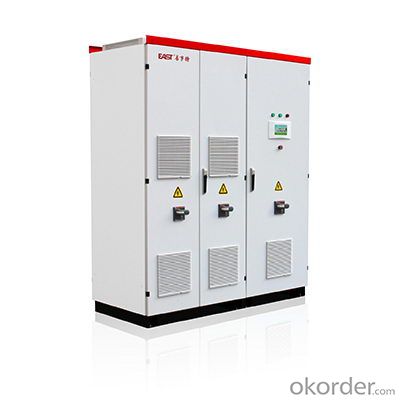

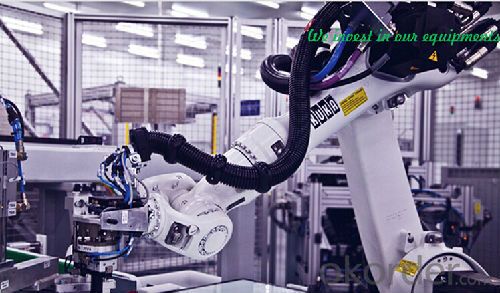
- Q: Can a solar inverter be used with a backup power supply (UPS)?
- Yes, a solar inverter can be used with a backup power supply (UPS). The solar inverter can convert the DC power produced by solar panels into AC power, while the UPS can provide backup power in case of a utility grid failure. This combination allows for uninterrupted power supply, even during power outages.
- Q: What is the impact of temperature on the performance of a solar inverter?
- Temperature has a significant impact on the performance of a solar inverter. As temperature increases, the efficiency of the inverter tends to decrease. This is primarily due to the fact that high temperatures can lead to increased resistive losses within the inverter's components, resulting in reduced overall efficiency. Additionally, excessive heat can cause the inverter to experience thermal stress, leading to potential malfunctions or even failures. Therefore, it is crucial to consider temperature management and cooling measures to optimize the performance and lifespan of a solar inverter.
- Q: Can a solar inverter be used in areas with unstable power grids?
- Yes, a solar inverter can be used in areas with unstable power grids. Solar inverters are designed to convert the direct current (DC) produced by solar panels into alternating current (AC) that can be used to power homes or businesses. In areas with unstable power grids, the solar inverter can help stabilize the electricity supply by converting the solar energy into usable AC power, independent of the grid's stability. Additionally, some advanced solar inverters come with features like grid-tie functionality, battery storage, or grid support functions that further enhance their ability to adapt to unstable power grids.
- Q: What is the role of an isolation transformer in a solar inverter?
- The role of an isolation transformer in a solar inverter is to provide electrical isolation and safety. It separates the input and output circuits, preventing any direct electrical connection between them. This isolation helps protect the inverter and its connected devices from electrical faults, such as ground faults, and reduces the risk of electric shock. Additionally, the isolation transformer can also help reduce common mode noise and provide better power quality by reducing the effects of electromagnetic interference.
- Q: Can a solar inverter be used with a ground-mounted solar array?
- Yes, a solar inverter can be used with a ground-mounted solar array. A solar inverter is responsible for converting the DC (direct current) electricity produced by the solar panels into AC (alternating current) electricity that can be used to power homes or businesses. Whether the solar array is ground-mounted or roof-mounted, the solar inverter plays a crucial role in converting the electricity for use in the desired location.
- Q: How does a solar inverter handle voltage fluctuations from the battery bank?
- A solar inverter handles voltage fluctuations from the battery bank by utilizing its built-in control mechanisms and electronics. These components monitor the voltage output of the battery bank and regulate it to ensure stable and consistent voltage levels. This helps prevent any sudden or drastic fluctuations that could potentially damage electrical equipment or disrupt the functioning of the system.
- Q: What is the role of a grid protection relay in a solar inverter?
- The role of a grid protection relay in a solar inverter is to monitor the electrical grid and protect against any abnormalities or faults that may occur. It ensures the safe and reliable operation of the solar inverter by detecting and isolating faults such as overvoltage, undervoltage, overfrequency, underfrequency, and other grid disturbances. The grid protection relay acts as a safeguard, preventing any damage to the solar inverter and maintaining the stability of the grid connection.
- Q: Are there any ongoing maintenance requirements for a solar inverter?
- Yes, there are ongoing maintenance requirements for a solar inverter. Regular cleaning of the solar panels to remove dust and debris is necessary to maintain optimal performance. Additionally, inspections and tests of the inverter's components, such as cables and connections, should be conducted periodically to ensure everything is functioning properly. Monitoring the inverter's performance and addressing any issues promptly is also crucial for long-term maintenance.
- Q: What is the role of a voltage regulation feature in a solar inverter?
- The role of a voltage regulation feature in a solar inverter is to ensure that the voltage output from the solar panels is maintained at a stable and optimal level. This helps to protect the sensitive electrical components in the solar inverter and other connected devices, while also maximizing the efficiency and performance of the solar power system.
- Q: How does a solar inverter handle voltage regulation?
- A solar inverter handles voltage regulation by constantly monitoring the voltage from the solar panels and adjusting its output voltage accordingly. It ensures that the voltage produced by the panels matches the required voltage for the electrical grid or the connected devices. This regulation is crucial to maintain stable and reliable power supply, protect the equipment from voltage fluctuations, and ensure optimal energy conversion efficiency.
Send your message to us
Amazon Solar Inverter EA500KTL/H - Wider Input Voltage Range and Higher Efficiency On-Grid PV Central Inverter
- Loading Port:
- China main port
- Payment Terms:
- TT or LC
- Min Order Qty:
- 1 pc
- Supply Capability:
- 1000 pc/month
OKorder Service Pledge
OKorder Financial Service
Similar products
Hot products
Hot Searches
Related keywords
